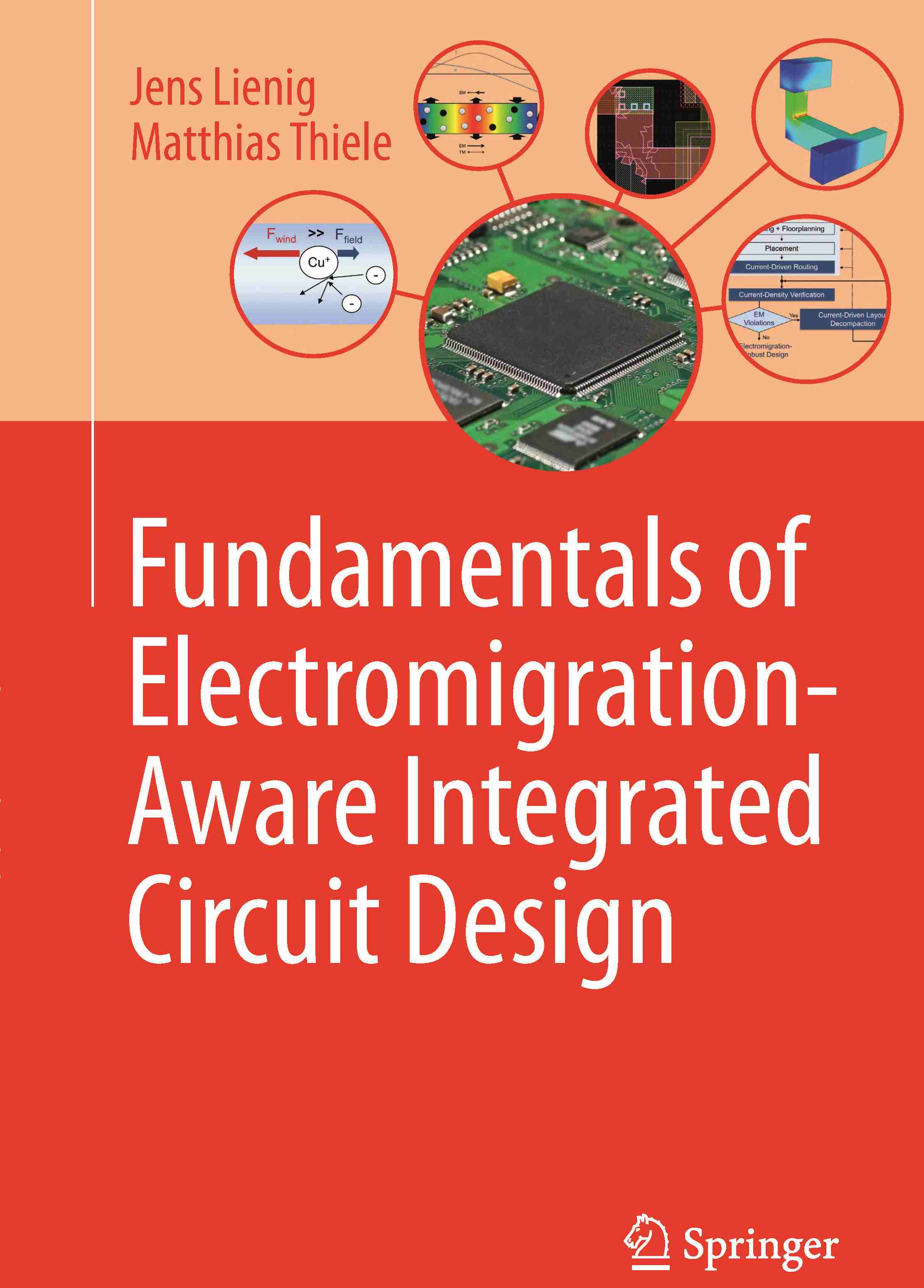|

|
Fundamentals of
Electromigration-Aware Integrated Circuit Design
Jens Lienig,
Susann Rothe, Matthias Thiele
2025, 164 pages,
Springer Cham
ISBN
978-3-031-80022-1,
eBook ISBN 978-3-031-80023-8
DOI 10.1007/978-3-031-80023-8
|
|
|
Errata (2nd edition)
Please
email jens.lienig [at]
ifte.de if you find any errors.
-
p. 17 (last line of first paragraph): The relation symbol is
incorrect: ">10⁻³ A/cm²" should be "<10⁻³ A/cm²" (current densities
less than 10⁻³ A/cm²).
-
p. 76, Fig. 3.6: The depicted current sum is not zero as not all
terminals are shown (partial net).
-
p. 76 (Example): For consistency, the "+" sign should be added to "1.8 mA".
|

|
Fundamentals of
Electromigration-Aware Integrated Circuit Design
Jens Lienig,
Matthias Thiele
2018, 159 pages,
Springer International Publishing
ISBN
978-3-319-73557-3,
eBook ISBN 978-3-319-73558-0
DOI 10.1007/978-3-319-73558-0
|
|
Errata (1st edition)
Please
email jens.lienig [at]
ifte.de if you find any errors.
Following the convention that
compressive stress is defined as negative and tensile stress as
positive, the following two changes are required:
-
p. 17 (first paragraph):
The relation symbol is incorrect: ">10⁻³ A/cm²" should be "<10⁻³
A/cm²".
-
p. 35 (last paragraph) and p.
37 (first paragraph of 2.5.2): "negative mechanical tension gradient"
should be replaced by "positive mechanical tension gradient".
p. 42, Eq. 2.17: the
"negative sign" of the right side term should be omitted as
follows:

-
p. 73, Fig. 3.5: The depicted current sum is not zero as not all
terminals are shown (partial net).
-
p. 73 (Example): For consistency, the "+" sign should be added to "1.8 mA".
-
p. 105 (segment definition):
Please note that (contrary to our definition of a segment here and in
Fig. 4.5) the short-length effect (a.k.a. Blech product (jL)) is only
applicable to segments which are bordered by diffusion barriers at
both ends. There must not be any connected segments within the same
metal layer as they would add to the total hydrostatic stress and,
thus, impact the EM assessment.
←
back
to book page
|

